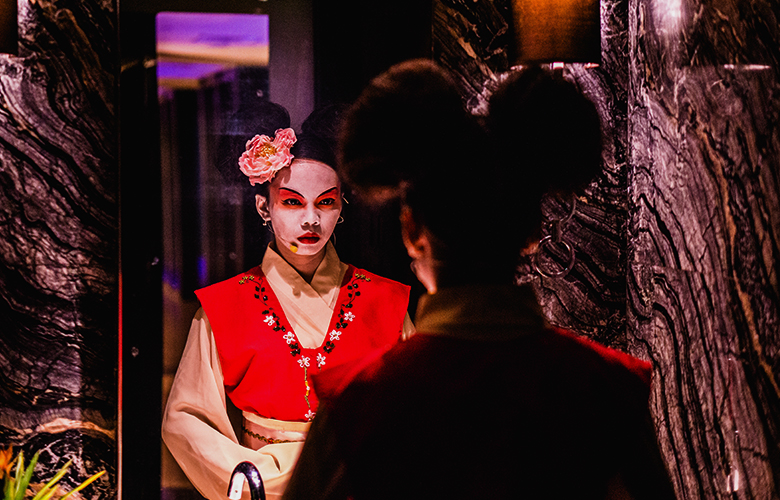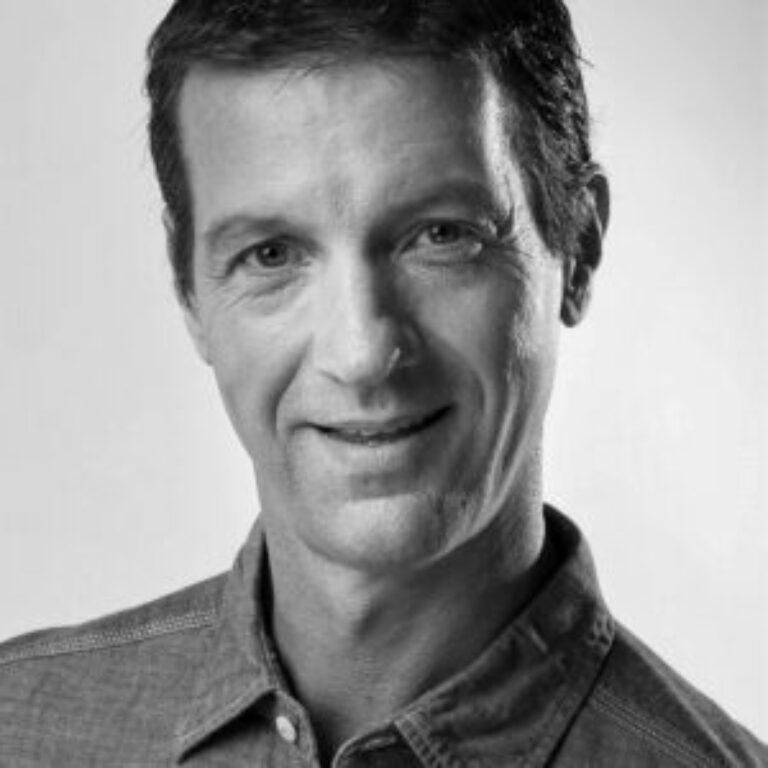
Today, more than ever, we need an authentic theatre. One that combats deception, misinformation and distraction. But what does such a theatre look like? And how can it be created?
Let’s start with a seemingly straightforward question.
Numerous answers spring to mind. A stage. The iconic red curtain. Lights. Set. Music. Costumes. And let’s not forget the play itself, so often underpinning an entire production.
But can theatre exist without these elements? Can we have a theatrical experience without lights? Or a set? Or even a play?
The answer is, of course, a resounding ‘yes’.
So, if that’s the case, what are we left with?
The great Polish director, Jerry Growtowski, who propagated the idea of a ‘Poor Theatre’, claimed there were only two essentials in theatre.
The first was the actor.
The second was the audience.
Legendary British director, Peter Brook opens his seminal book The Empty Space with a similar idea;
I can take any empty space and call it a bare stage. A man walks across this empty space whilst someone is watching him, and this is all that is needed for an act of theatre to be engaged. Yet when we talk about theatre this is not quite what we mean. Red curtains, spotlights, blank verse, laughter, darkness, these are all confusedly superimposed in a messy image covered by one all-purpose word. – Peter Brook
Here we have two of the twentieth century’s greatest theatre practitioners basically saying the same thing–
That theatre, when distilled to its purest essence, is what unfolds between a spectator and an actor.
Everything else is dispensable.
But how do we connect this understanding of theatre with authenticity?
Well, if we start with the various dictionary entries for ‘authentic’, synonyms such as “genuine”, “real” and “true” are frequently employed.
The best one for our purposes, however, comes courtesy of the Oxford which offers this:
So, by combining Brook/Growtowski’s basic principles with the Oxford definition, we arrive at;
Okay, but what does that mean in a real world context?
It might be easier if we break it down into chunks.

First up, notice the word “encounter” when referring to what takes place between actor and audience.
This is important because just sharing the same space is not enough.
Something must happen between those onstage and those watching.
Something that goes beyond words, beyond character, beyond even the space itself.
That “something” is connection.
For it is this, more than any other characteristic which separates theatre from simply performance.
Somewhere along the line, we’ve come to accept that every performance which takes place with actors is ‘theatre’.
It’s a belief that, whilst understandable, is actually inaccurate.
And that’s because theatre and performance serve two separate purposes.
Complementary, yes.
But ultimately different.
Performance, at its heart, is designed to entertain. It engages the human personality by showcasing the phenomenal range of expressive possibilities available to us.
It is, as the old saying goes, supposed to “make us laugh and make us cry”.
Theatre, on the other hand, has a grander objective.
Although it too starts off by engaging the human personality, that must never be its end point.
The real purpose of theatre is to connect us to spirit.
If performance is entertainment, then theatre is communion.
Theatre has the capacity to give us a glimpse of the Divine.
It can unite us with something greater than our individual selves.
Ultimately, an authentic theatre allows for the possibility of being transformed.
Even if it’s just for a moment.
But how do we attain such a lofty ideal?
If we consider the practical application of an authentic theatre, it’s pretty clear the primary responsibility lies with the actor.
But immediately we run into a problem.
For if, as many people believe, the actor’s job is to “pretend to be someone else”, how can they simultaneously be authentic?
It’s a paradox that’s evoked much soul searching amongst both actors and directors.

Anyone who’s studied acting knows the name Konstantin Stanislavski.
A Russian actor and director at the turn of the twentieth century, he established a method of acting that became the most widely adopted approach in contemporary theatre and film.
What isn’t as well known is how it came about.
Jean Benedetti, author of Stanislavski & the Actor explains it as follows;
He had stopped feeling creative as an actor. He felt that he had become mechanical, an empty shell, relying on external technique but with no real inner feeling, and that without feeling an actor had nothing essential to communicate to an audience. – Jean Benedetti
Essentially, Stanislavski had lost his authenticity.
As a result, he would go on to dedicate the rest of his life formulating an approach designed to recapture it.
That approach, when it found its way to the west, became known simply as “The Method”.
The Method, at its core, is based on the principle that an actor must portray character identically to everyday life.
The objective is to eliminate any sense of falsehood brought about by performance and show a real person with real emotions living in the world of the play.
Such an approach has led to the much publicised “method actor” who chooses to continue living their character outside of the play (or film), all in the name of channeling a greater level of truth.
Whilst on the surface this extreme approach may seem an admirable dedication to craft, it’s actually built on a mistaken assumption.
Which is that facts are truth.
Facts simply give us a label of what something is. But it’s not the thing itself.
As a result, trying to accurately replicate facts gives no insight into the deeper meaning that infuses our world.
And so by attempting to mirror life as seen, the actor is engaging, not with what is, but what appears to be.
This can never lead to authenticity.
So, if authentic theatre derives from neither ‘performance’ nor ‘facts’ alone, then where do we find it?
The answer is simpler than we could imagine.
It’s born of our intent.
Within the seed of every creative act, lies a reason for undertaking it, which in the beginning, is known only by its creator.
But here’s the irony. Whatever form the finished piece may take, it will always reveal the intent behind it.
This is the “undisputed origin” the Oxford was referring to.
Our creations reflect us, whether we want them to or not.
So, a commitment to authentic theatre starts with the intent to serve something greater than ourselves.
Before “doing” anything, we choose, to the best of our ability, to honour…
The Muse.
Grace.
Dionysus.
Whatever you want to call it.
And by offering this gift to the Gods, we’re in fact re-connecting to theatre’s origins.
Thereby laying the platform for creativity to alchemise into Divinity.

For anyone thinking, “well that’s all pretty lame”, don’t worry, there’s still one more step.
And that is: do the work.
None of what I’ve said eliminates the sheer bloody-mindedness needed to successfully birth a creative act, be it theatre OR performance.
Actors, you’ll have to invest time, creativity and courage into building and re-building your characters.
And let me also add, as a caveat to everything I’ve said of Stanislavski, that a commitment to improving your craft is still essential.
The tools you have at your disposal will ultimately become the means by which to access the profound.
However, there’s no point seeking authenticity if your instrument (in other words, “you”) isn’t skilled enough to express it.
Likewise, directors will need to prepare each show with a scope that never ceases to be overwhelming.
You’ll also have to enter rehearsals willing to throw out every bit of prep so painstakingly assembled, if that means allowing the show to grow and evolve organically.
And producers, the search for funding will continue.
Investors won’t care about things like “authenticity”, “communion” or “spirit”. They’ll just want to know the bottom line, and you have to work with that.
But in the inner circle of your creative team, you’ll know the true purpose of what you’re doing.
And it’s not about set, lights, methods, or any of the externals.
It’s only to create an authentic theatre that allows us to experience meaning.
And transformation.
And love.
In today’s world, I can think of no more noble a pursuit than that.
What is the Culture of Entertainment: Beginning the Discussion
The Misconceptions & Myths of Stage Management


Michael Walker has worked as an actor, writer and director in Japan, Australia, the UK and the US. His acting credits include commercials, television shows and feature films. He was also the founder of maidenagoya, Nagoya’s first foreign-led, independent theatre company. Amongst the numerous shows he directed was Martin Sherman’s Bent, and a bilingual version of Romeo & Juliet, which toured Tokyo after its Nagoya season. Along with his theatre work, Michael is an experienced screenwriter who has had films play at festivals around the world. He is currently living in Tokyo and is the Artistic Director of Sheepdog Theatre.
Read Full Profile© 2021 TheatreArtLife. All rights reserved.

Thank you so much for reading, but you have now reached your free article limit for this month.
Our contributors are currently writing more articles for you to enjoy.
To keep reading, all you have to do is become a subscriber and then you can read unlimited articles anytime.
Your investment will help us continue to ignite connections across the globe in live entertainment and build this community for industry professionals.